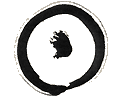Nidan Essay
After having trained for several years it became apparent that we all come to the Dojo for different reasons. Most students train to learn self-defense, to grow spiritually and to foster relationships made over time. The common thread that brings all to the Dojo is to become better Aikidoka and how we spend our time training determines how successful we will be in achieving that goal. How does one become a better Aikidoka? My experience suggests that growth comes through watching, doing, and teaching.
When watching, both our physical and mental state are of equal importance. Sitting in proper seiza, back straight, chin lowered, attention focused directly on Sensei and what he is demonstrating, we prepare our minds and bodies for training. Depending on the level of ability, each student may see a technique differently. I can recall being a new student and watching a technique being demonstrated, then struggling and feeling frustrated when attempting what I saw. My attention was solely focused on one part of the technique, the position of the feet or hands or which way to blend and I missed most of what was being shown. Beginning students often see only one small aspect of the technique and focus on it while missing the entire lesson Sensei is giving. After several years of training I became more familiar and comfortable with basic Aikido and could quickly recognize the technique demonstrated. At times my focus wandered and I missed the actual lesson being taught. A failing of more advanced students is assuming they know what Sensei wants, missing what he is actually emphasizing. Advanced students should foster the "beginners mind", and be open to the message Sensei is conveying not their preconceived notion of it. Whether Yudansha or beginner accept what is being taught. Questioning the validity of Sensei's example impedes learning, and prevents students from realizing their potential and advancing. Learning to watch allows us to better see and understand.
I've found that the only way to become comfortable and proficient with Aikido is through diligent practice. While training under Sensei's supervision remember that regardless of the technique, there are basic fundamentals that are inclusive of all Aikido; starting in hanmi, posture, blending, balance-breaking and ending in hanmi. I try to imitate the technique exactly as demonstrated. Although it may differ from what is "familiar", Sensei may be emphasizing something he believes needs correction or further development. There are times we all feel frustrated in our training, and when we have difficulties with a particular technique or a training partner it is helpful to use these encounters as positive learning experiences. As difficulties arise, it is helpful to slow down and focus on form. By rushing through the techniques we mask our own deficiencies and never correct "sticking points". And if I can't make it to the Dojo as often as I would like? Training without a partner is possible by doing what might be called "shadow Aikido", practicing movements for a variety of techniques while visualizing attacks. It is possible to do Aikido in this manner focusing on posture, and movement.
Once confidence and proficiency with the basic techniques in Aikido have been demonstrated Sensei may ask the student to prepare another student for testing, or if of sufficient rank, teach a class. Although teaching may seem to be the antithesis of learning I've found a more thorough understanding of Aikido principles can be gained through instructing. When demonstrating techniques and breaking them down to their basic elements, students as teachers can better see the fundamental principles behind them. Teaching in this way also helps to reinforce what has already been learned and to correct and make adjustments to techniques when needed. Many lessons can be learned through observing, demonstrating for, and correcting fellow students as they train. Teaching is a wonderful opportunity that invites us to question and reinforce the understanding of how and why techniques work and the principles behind them, thereby enhancing personal growth.
I would like to thank all my friends at Aikido North for their support through the years. Thank you Sensei Koshiyama for all you have taught me.
Tom Fischer, July 1st, 2003, Aikido North
